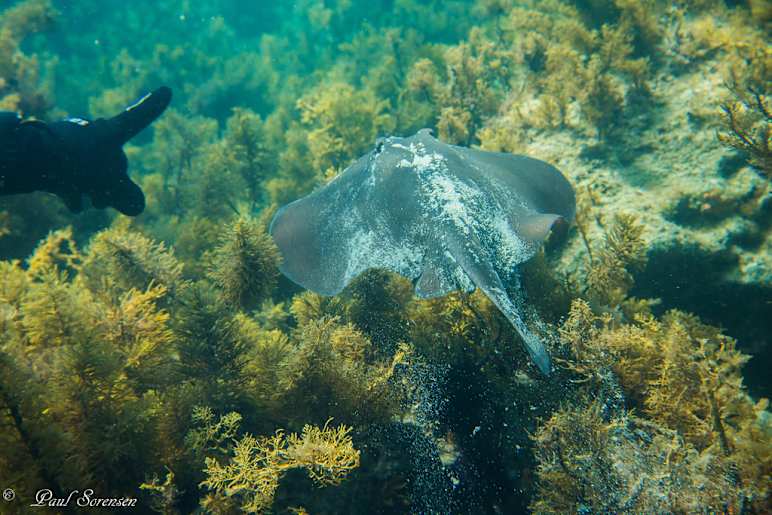
The scientific name of the Eastern Shovelnose Stingaree is Trygonoptera imitata. Photo: Paul Sorensen

This species of stingaree is found in our local waters and are usually about 80 centimetres in length. Photo: Paul Sorensen
Welcome to the Marine Mili series, a regular column about all things marine! During this series I aim to inspire people to want to protect our oceans and all the marine life that call our oceans home. Hopefully after reading each column, you would have learnt something new including what we can do to help protect and preserve our oceans. You can follow me and my journey on my Instagram page:
_marine_mili.
The Eastern Shovelnose Stingaree or the Trygonoptera imitate (scientific name) is a species of stingray found in our local waters of Victoria.
They are also found along southeastern Australia waters which range from New South Wales to South Australia.
They are a common species in Port Phillip Bay and Western Port Bay and usually grow to eighty centimetres or more, which makes it a medium sized ray.
Their diet consists of bottom dwelling invertebrates including worms, mollusc and crabs, however, they can feed on small bony fish as well.
Usually, the Eastern Shovelnose Stingaree is found in shallow inshore waters about five metres deep, but they have been seen in waters up to 120 metres in depth.
Mostly though they are known to stay in shallow waters and areas like bays, hanging out in seagrass beds or rocky reefs.
This species can also come quite close to shore sometimes and bury themselves in the sand ... and sometimes people accidently step close to them and they shoot off.
This also happens with scuba divers when the ray burrows themselves in the sand for camouflage. But when they feel a diver’s presence they sometimes shoot away, as they are easily scared.
This species has a barb, or more specifically two serrated venomous spines, located on their tails.
However, stingarees won't sting somebody unless they feel threatened; so if humans respect them and their space, they are not a creature to fear but a creature to be fascinated by.
Sometimes I like to do a ‘stingray shuffle’ when entering the water ... which is where you shuffle your feet gentle through the sandy sea floor while walking.
If a ray is near by, the vibrations around them can scare them, which causes them to move away.





